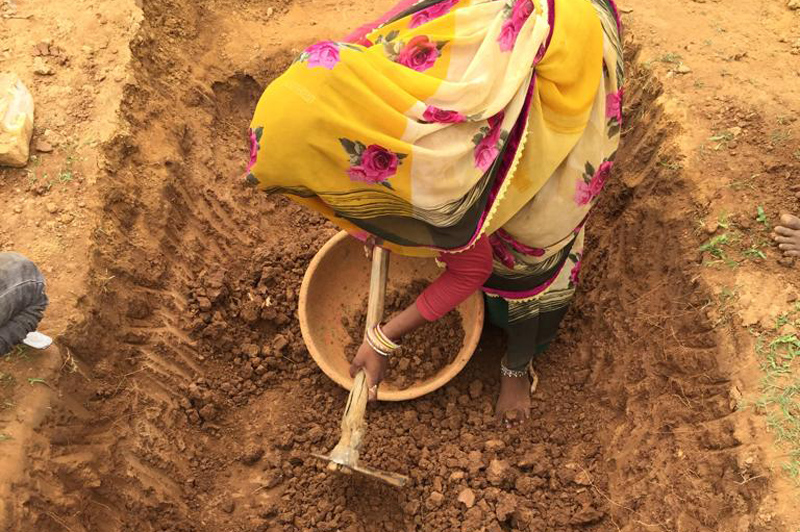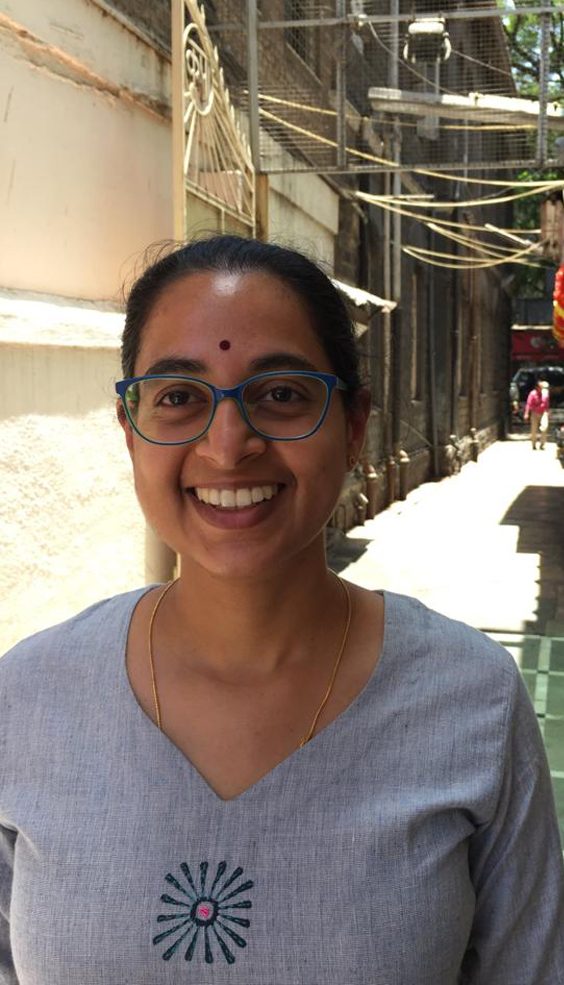


Studying diamond mining in India
Photo by September 18, 2020
Master’s student provided policy recommendations to protect environment, artisanal workers’ livelihoods
In some ways, Sindhuja Sunder’s interest in the policy practices of diamond mines in India began while on a wildlife excursion in South Africa.
Before arriving at the University of Delaware to study for a master’s degree in geography, Sunder volunteered for a wildlife monitoring project in the uMkhuze Game Reserve in South Africa, living in the reserve for two weeks tracking lions, rhinos and elephants. While there, she met a woman conducting research on poaching and discovered the importance of educating local populations on the benefits of conservation efforts.
“People in that area of South Africa were poaching because there are enormous syndicates that pay people to get rhino horns or elephant tusks,” said Sunder. “The locals will engage in poaching simply because they are poor, they need money and the syndicates pay well. So you can see clearly that if you’re not making the community aware of the need for conservation and also invested in conservation, they’re going to hamper you in every way because they’re just trying to live their lives.”

It was this line of thinking that helped Sunder develop her master’s thesis focused on “The Coexistence of Mining and Conservation: Policy Lessons from the Artisanal Diamond Mines and Adjoining Tiger Reserve in Panna, India.”
Having been advised by Saleem Ali, Blue and Gold Distinguished Professor of Energy and the Environment in the Department of Geography and Spatial Sciences in UD’s College of Earth, Ocean and Environment at the University of Delaware, Sunder also served as the President of the Graduate Student Government during her time at UD. She said the Graduate Student Government is important for many reasons, especially because it allows graduate students the opportunity to engage in student advocacy and make social connections with individuals outside of their respective departments. In addition, she was nominated by the Department of Geography and Spatial Sciences as a UD Woman of Promise this year.
Sunder said that people have been mining in Panna, India since antiquity. She wanted to discover how the extraction of diamonds, which is an economic boon and traditional livelihood for those in the region, can coexist with nature and wildlife conservation.
“In this case, the diamond deposits are quite close to the border of a national park and a tiger reserve so I was curious about how you can continue to do these mining activities while at the same time, making sure that the tiger populations aren’t affected and that deforestation isn’t happening,” said Sunder.
As she explored the topic, Sunder went to India in the summer of 2019 and spent time in Panna, where diamond mining happens. She said that this was a formative experience that helped her further develop her master’s thesis, in which she wrote policy recommendations for governmental and societal restructuring in the area, as well as restructuring the way that the actual mining happens.
One of the big things that she suggested the area implement is a practice created by the World Bank known as Forest Smart Mining, which is used to minimize direct and indirect impacts of mining on forests.
Sunder focused on small-scale and artisanal diamond mining, done mostly by people with manual tools digging shallow pits into the ground and then sieving through the gravel to find diamonds. Her research makes the case that environmental reclamation directives should delineate between artisanal and small-scale mining.
“The differences between small-scale mining and artisanal mining is that small-scale mining may still use some mechanization,” said Sunder. “With small-scale mining, they might hire machines at the start of the project to dig out an enormous quantity of earth, and then it becomes a project for the next two years to go through all the earth that was uncovered.”
Artisanal mining, on the other hand, is classified as an individual using a pick axe or a hand-held tool to break up gravel and rocks in order to look for diamonds.
Sunder suggests that the Indian government — which determines who gets permits for mining and where those individuals are allowed to mine — enforce rules for small-scale mines to engage in activities that help remediate the damage caused to the environment. While the mines might be small-scale in name, they are able to dig out enormous plots of land whereas artisanal mining is just the result of one person’s manual labor.
“With small-scale mining, because you have the machinery, you could pursue those gravel layers that hold the diamonds that are up to 20 or 30 feet deep,” said Sunder. “They’re deeper and they’re larger. So even though the government requires that any plot that is mined to be no bigger than eight meters by eight meters, someone who is engaged in this small-scale mining could lease out five eight by eight plots, put them all side by side, and then dig out the entire area.”
Sunder said she originally thought she would focus her research on large-scale mining operations, but was glad that she got the opportunity to focus her research on artisanal and small-scale mining.
“What I liked about the research is that I feel like I produced useful knowledge on how to govern small-scale and artisanal mining,” said Sunder. “How to sustainably manage large-scale mines is fairly well researched, but small-scale mining, especially diamond mining, is less well researched. I liked where I ended up, and it’s all because I was able to go into the field. Being there in India showed me what was more important and what could be more useful.”
Contact Us
Have a UDaily story idea?
Contact us at ocm@udel.edu
Members of the press
Contact us at 302-831-NEWS or visit the Media Relations website

